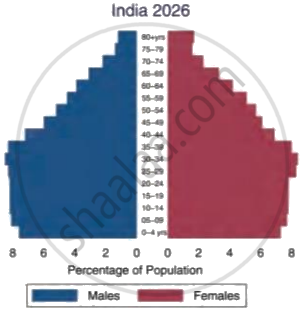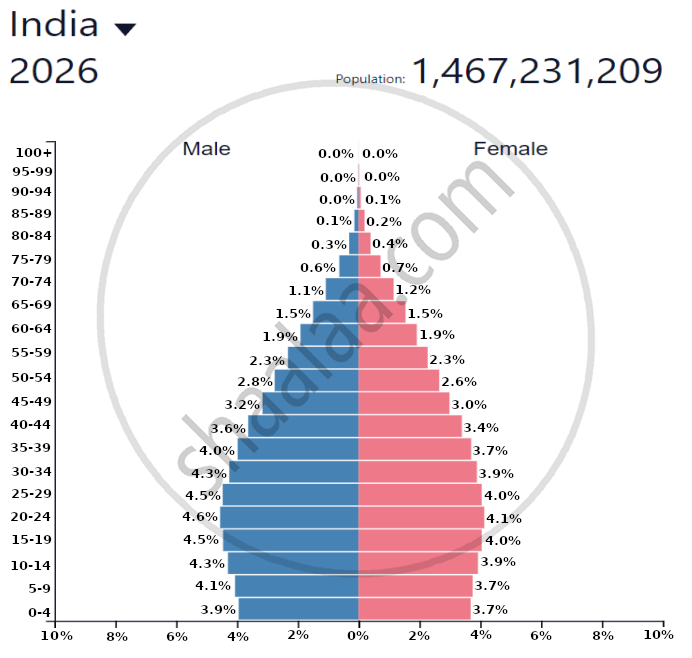Advertisements
Advertisements
Question
What is meant by the ‘age structure’ of the population? Why is it relevant for economic development and growth?
Solution
- India has a very young population. The average age of an Indian is less than that for most other countries. Majority of Indians are between the age group of 15 and 64 years.
- Age structure of the population refers to the proportions of persons in different age groups relative to the total population.
- Population under the age of 15 has decreased from 42% in 1971 to 31% in 2011. During this period the ratio of age group 15 to 64 was gone up from 53% to 63.7%.
- Age structure in a country changes with development poor medical facilities, prevalence of disease reduce the life expectancy.
- Age structure of population can be put in following age groups:
0-14 years. [Children]
15-59 years. [Working population]
60 + Years. [Old people]
This age structure of the Indian population can be understood by following table.
Table. Age structure of the indian population 1961-2026
| Year | Age groups (Percentage round up) | Total | ||
| 0-14 years | 15-59 years | 60+years | ||
| 1961 | 41 | 53 | 6 | 100 |
| 1971 | 42 | 53 | 5 | 100 |
| 1981 | 40 | 54 | 6 | 100 |
| 1991 | 38 | 56 | 7 | 100 |
| 2001 | 34 | 59 | 7 | 100 |
| 2011 | 29 | 63 | 8 | 100 |
| 2026 | 23 | 64 | 12 | 100 |
This table indicates that the share of the under 15 age group in the total population has come down from higher level of 42% in 1971 to 34% in 2001 and it is perfected to be reduced to 23% in 2026. It means birth rate in India is gradually decreasing.
Relevance for economic development and growth :-
- Due to the advancement in medical sciences, public health measures and nutrition the life expectancy is at rise. This is due to economic development and growth.
- Need of family planning in being understood. Decrease in 0-14 years age group reveals that National population policy is implemented properly.
- Because of socio-cultural changes in Indian society and economic growth Age structure of population is moving towards positive young India.
- Dependency ratio is decreasing and increase in working population is causing positive growth in Indian economy.
- Economic development and improvement in quality of life improve life expectancy and changes the structures of the population.
- High infant mortality rate and material mortality rate due to poor economic growth hence an adverse effect of age structure on the population.
APPEARS IN
RELATED QUESTIONS
Ageing population implies:

When does the bottom of a population pyramid become narrow?

Which kind of society is depicted in this pyramid?

This pyramid does not indicate which of the following?
What refers to the proportion of people in different age groups relative to the total population?
Dependents comprise of
Assertion(A): The Population Pyramid shows a bulge in the middle age groups, due to the opportunity provided by the demographic structure.
Reason(R): This is due to the high birth rate in the middle age groups.


Based on the given Population Pyramids of India for the year 2026 and 2050, answer the following questions.
- What is demographic dividend?
- What do you infer, on comparing the given graphics for the age group of 55-59 and 60-64
- What, according to you, are the implications of this inference?
